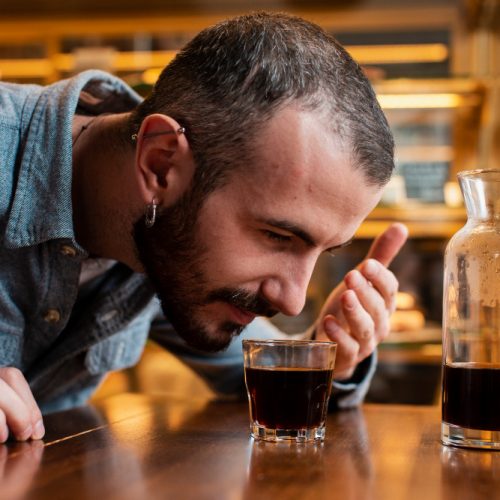Addictions General Intervention Model And Treatment Techniques
Addictions Treatment
The first goal of treatment is for the person with an addiction to accept that they need treatment. In both legal and illegal drugs, there is a process of denial by many of the addicts to them (Becona, 1998a). Drugs produce pleasure, well-being, and satisfaction (positive reinforcement). At the same time, the drug allows them to avoid withdrawal symptoms (negative reinforcement) when they do not consume or do not have enough of it.

Once the person assumes that they have to change, they will request different help. Moreover, it is important to make him see that he needs help. That he has to change his behaviour due to the serious and obvious consequences that are taking place, but that the person does not see at that moment.
Once the denial phase has been overcome, the reason for seeking help, related factors and other difficulties caused by the dependency must be clearly defined. This is the evaluation phase.






Withdrawal in Addictions
The treatment for Addictions will be oriented initially so that the person achieves abstinence. Here the approach will vary depending on whether it is a person dependent on alcohol, nicotine, heroin, cocaine or gambling or the Internet Internet. However, within more common than different aspects regarding the treatment techniques we will use with one or the other. Today there are harm reduction programs, mainly methadone maintenance.
Once the detoxification has been achieved, or what is the same, that the person stops consuming the substance, the process of psychological detoxification begins. This is the longest and most complex process of the addictive process. It is excepted when the person is in a methadone maintenance program, in which case both processes go in parallel.

Cessation Addictions
The psychological detoxification in Adiciones aims to ensure that the dependent person can face withdrawal.
In the case of heroin dependence, they are trained using techniques to face life without drugs. This is to avoid them, reject them and reorganize their environment so they can be without them (Becoña & Vázquez, 2001). This is one of the most complex parts because sometimes they have been consumed for many years. Also, many have discovered that they can get better quickly when they feel sick by taking drugs. Hence the relevance of training in coping strategies in situations of risk for consumption.
Drugs produce immediate effects. A few seconds pass between consumption and its effect. There is also great availability, and the person can access them. Training to generate skills to live without drugs, feel good and obtain social support are some of the keys to successful treatment. It should not be forgotten that drugs achieve not only an immediate effect but that, due to previous consumption, they have become reinforcing. You have to look for reinforcing alternatives to counteract the negative consequences of consumption (since when you are addicted, you only see the positive ones). Also, find the advantages of not consuming on a personal, family, social level, etc.
 The Marlatt and Gordon (1985) model offers effective techniques so that the person does not relapse. Relapse prevention has become one more component of treatment. We can get the person to remain abstinent; if he relapses, he can return to abstinence.
The Marlatt and Gordon (1985) model offers effective techniques so that the person does not relapse. Relapse prevention has become one more component of treatment. We can get the person to remain abstinent; if he relapses, he can return to abstinence. The motivational interview (MI) in Addictions allows for addressing the lack of motivation in those subjects in the pre-contemplation or contemplation phases. It uses eight motivational strategies, which effectively motivate the patient to change her behaviour. These are:
The motivational interview (MI) in Addictions allows for addressing the lack of motivation in those subjects in the pre-contemplation or contemplation phases. It uses eight motivational strategies, which effectively motivate the patient to change her behaviour. These are: The purpose of the exposure is to expose the player to a slot machine. Through the presence of the clues that have been associated, notice the annoying sensations that, without preventing the response or with money, would lead you to gamble. The prevention of the response has as its objective the impossibility of consummating his behaviour, in this case, his behaviour of playing.
The purpose of the exposure is to expose the player to a slot machine. Through the presence of the clues that have been associated, notice the annoying sensations that, without preventing the response or with money, would lead you to gamble. The prevention of the response has as its objective the impossibility of consummating his behaviour, in this case, his behaviour of playing. Cognitive therapy starts from the premise that disorders are produced and maintained due to distorted underlying cognitions. Also, to different errors in the processing of information. Treatment aims to correct these distorted premises and cognitive errors (Beck et al., 1993). Beliefs and urgencies are very relevant in cognitive therapy for Addictions. For Beck, the behaviour (e.g., consumption) and the biological (e.g., withdrawal syndrome) occur from the maladaptive cognitive pattern. What cognitive therapy is going to do is modify the individual’s thoughts and mistaken beliefs and teach self-control techniques.
Cognitive therapy starts from the premise that disorders are produced and maintained due to distorted underlying cognitions. Also, to different errors in the processing of information. Treatment aims to correct these distorted premises and cognitive errors (Beck et al., 1993). Beliefs and urgencies are very relevant in cognitive therapy for Addictions. For Beck, the behaviour (e.g., consumption) and the biological (e.g., withdrawal syndrome) occur from the maladaptive cognitive pattern. What cognitive therapy is going to do is modify the individual’s thoughts and mistaken beliefs and teach self-control techniques. When this is the case, it is necessary to use anger and aggression control strategies such as the stress inoculation technique, role-playing, assertiveness training, relaxation training, Contingency management, problem-solving or cognitive restructuring.
When this is the case, it is necessary to use anger and aggression control strategies such as the stress inoculation technique, role-playing, assertiveness training, relaxation training, Contingency management, problem-solving or cognitive restructuring. Group therapy is a therapeutic modality frequently used to treat people with different addictions (Galanter et al., 1998). Together with individual treatment and the other interventions you may be carrying out, group therapy is of great relevance in several specific treatments for addictions, especially perhaps in people who go to drug addiction centres and self-help associations, where it is an essential part of the treatment.
Group therapy is a therapeutic modality frequently used to treat people with different addictions (Galanter et al., 1998). Together with individual treatment and the other interventions you may be carrying out, group therapy is of great relevance in several specific treatments for addictions, especially perhaps in people who go to drug addiction centres and self-help associations, where it is an essential part of the treatment.